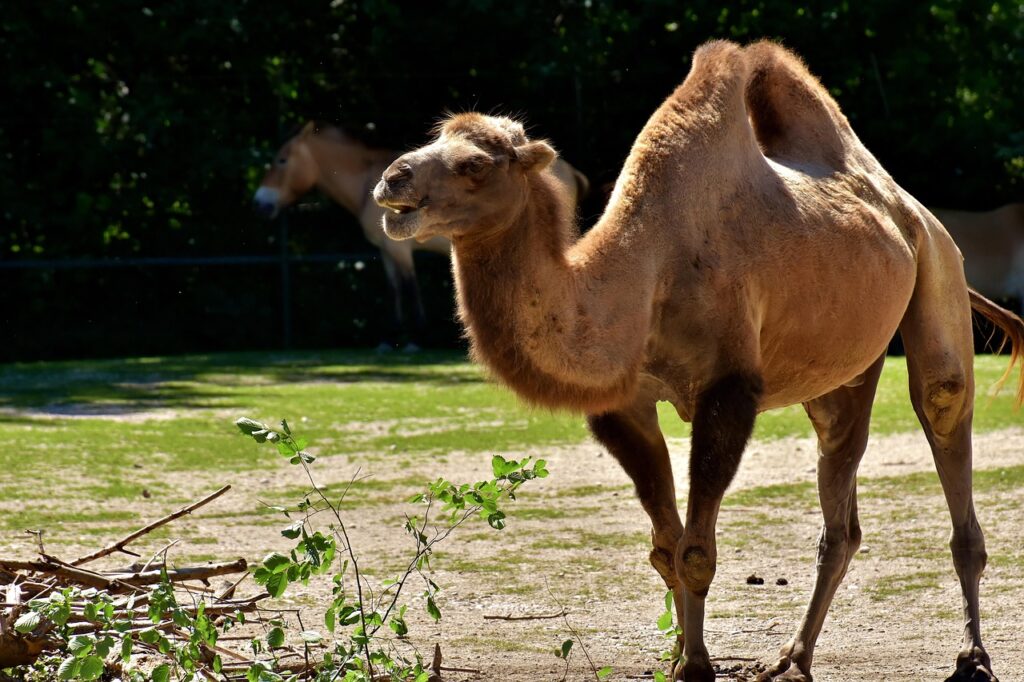
Camel humps actually store fatty tissue, not water, which is used as a source of nourishment when food is scarce. So why do camels store fat in these humps instead of having it spread equally throughout their bodies, like other mammals? Camels typically live in the desert, where food sources can be hard to come by. When a camel is unable to access food for a long period of time, its body is able to metabolize the fat in the humps for nutrition. The humps can deflate and droop if the camel has gone a particularly long time without food, but they will sit upright again once the camel is able to refuel. The camel’s humps also help the animal egulate its body temperature, an important feature in the desert, where temperatures can be extremely high during the day and drop drastically at night. By concentrating fatty tissue in humps on their backs, camels are able to minimize heat insulation throughout the rest of their body during the day when the temperature is high, and their body temperature rises. Then, at night, the extra heat dissipates through the rest of the camel’s body so that their body temperature is not too low when the temperature is cooler.
